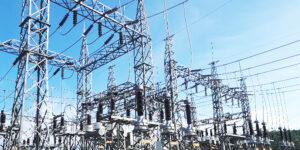
Agriculture remains a major sector in the Philippines, contributing approximately 12 percent of the country’s gross domestic product and providing employment to around 32 percent of the population.
In a country where a large majority of farmers operate at the subsistence, small-scale level, human-induced climate change is already disrupting crop productivity and compromising the food security of millions of Filipinos, according to Alicia Ilaga, director of the Department of Agriculture’s Climate Resilient Agriculture Office.
The Philippines is battered by around 20 tropical cyclones every year, and aid groups say the poverty-stricken communities – which include farmers and their families – are disproportionately affected. Conversely, during the dry season, the same farmers have to cough up funds for irrigation needs.
As we have seen from the destruction wrought by increasingly powerful typhoons like “Odette,” climate change has resulted in losses and damages in production and reduced production, as well as destroyed support facilities, storage, and farm to market roads.
Ilaga’s solution to this problem is anticipatory adaptation. We have to outsmart climate change so we don’t end up with nothing. The agriculture official said the DA is already delivering accurate and timely climate information to farmers and fishers, and training them to use climate-based farm advisories. They are also implementing crop diversification practices.
The DA’s flagship initiative for climate change adaptation and mitigation is its Adaptation and Mitigation Initiative (AMIA) that envisions all communities in the country becoming resilient to the increasing adverse effects of climate change.
A vital component of the program is the creation of model communities called AMA villages which would serve as go-to places for other communities to learn from and emulate, and where technological and institutional innovations are introduced. There are currently 116 such villages set up in 34 sites across the country and DA says they have documented increases in productivity and income.
Extreme weather events driven by climate change make life harder for millions of small farmers in the Philippines. As the planet continues to warm, scientists predict more frequent and intense floods, storms and droughts. Left with no choice but to adapt in order to mitigate the effects of climate change and global warming, the country’s small farmers and agriculture sector will need our Department of Agriculture to do a better job when it comes to taking the lead in making sure the industry is ready to face these expected challenges.*







